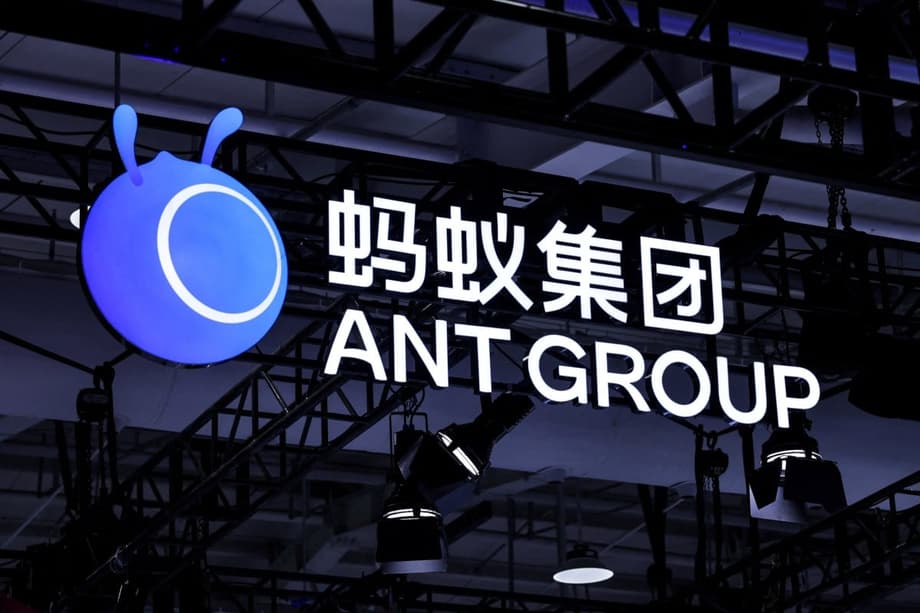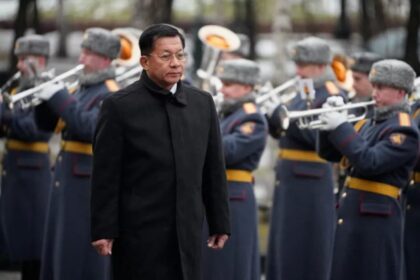A new AI assistant that codes and creates
Ant Group has introduced LingGuang, a multimodal AI assistant that can turn natural language prompts into working mini applications and rich visual answers in about 30 seconds. The company says it is China’s first assistant to deliver code driven responses across formats, from 3D models and animations to charts, audio, interactive maps, and instant flash apps that run on a phone. The release marks a new phase in the consumer AI race, where assistants are beginning to move beyond text chat into hands on tools that users can run, edit, and share.
LingGuang is designed for daily tasks and learning. Ask for a calorie tracker, a basic budget tool, a trip planner, a shopping helper, a Pac Man style game, or a Chinese character memorization app, and LingGuang will generate a functional version and open it inside the conversation. It can also explain complex subjects such as quantum entanglement or supply and demand using diagrams, animations, or simple 3D objects that illustrate a concept rather than just describe it.
The app is available on Apple’s App Store and major Android stores in China. Ant Group positions LingGuang for mainstream users who want to create simple software without writing code, and for students, parents, and workers who prefer answers in visuals or interactive form. The assistant includes a chat mode, a flash app builder inside the chat, and a camera feature that recognizes scenes and can produce or edit images and short video in real time.
Ant Group’s chief technology officer set the tone for the launch by stressing how accessible the tool aims to be.
“LingGuang brings every user their own personal AI developer, someone who can code, create visuals, build apps, and simplify complex ideas.”
What LingGuang can do today
The promise behind LingGuang is speed, variety, and output you can use. Many assistants summarize or search. LingGuang also builds. The system interprets a prompt, plans a response across several formats, then assembles the result as code and media. In practice, that means a user can ask for a quick budget tracker with preset categories, a monthly view, and a save function. The assistant writes the interface and logic, runs it on the phone, and lets the user tweak categories or currency. The same applies to simple games, planners, and study tools.
Flash apps inside a chat
Flash apps are small, task focused applications that run directly within LingGuang’s conversation. They are editable and shareable, so a user can adjust inputs, change layouts, or add a graph, then send the result to a friend. This lowers the barrier for people who would never open a code editor but still want a custom tool for a workout routine, an expense split, or a class quiz. The build time is measured in seconds and the results are meant to be light, not enterprise systems, which keeps the experience fast on mobile.
Visual research and explanations
When a question calls for more than text, LingGuang produces structured explanations and visuals. It can output a concise overview of a topic, highlight key points, and render a supporting graphic. For example, a physics question can receive a step by step outline and a simple animation that shows how two particles behave in an entanglement scenario. A geography prompt can return a 3D landmark, an interactive map, and a short audio description. Presented together, these cues try to make subjects easier to grasp for different learning styles.
Camera features and scene understanding
LingGuang’s camera mode applies the assistant’s multimodal abilities to real world images and video. It interprets a scene, identifies objects, and offers contextual tips. A user might point the camera at a plant and ask for watering guidance, then request a side by side comparison photo, or a stylized image for a post. The assistant can generate edits on the fly or synthesize a short clip, blending analysis and creative output without requiring another app.
How the code generation works
Ant Group describes LingGuang as a system that can interpret language, images, audio, data, and application code in a unified workflow. At a high level, a request is decomposed into tasks, such as interface design, data handling, and visualization. Specialized components then propose code and content for each part, and a coordinator assembles the pieces into a working mini app or a multimodal answer. This modular approach is common in modern assistants and helps the system move from a plain description to a set of clear steps and artifacts.
On a phone, the app functions as a container that can run the generated code, render charts and 3D objects, and play audio or animations. LingGuang keeps results simple and focused to reduce load time. That is why the apps it builds tend to be narrow tools that do one job well, such as tracking steps for a week or planning a two day itinerary. The assistant supports edits inside the chat, so users can change parameters and see the update instantly.
Security is a central concern when an AI writes runnable code. In consumer assistants, these flash apps typically execute in a restricted environment with limited permissions. This sandbox model prevents system level changes and avoids sensitive operations while still allowing useful features like local storage, charts, and maps. Ant Group highlights that outputs are interactive and shareable, which suggests a standardized format with controls that limit risk while keeping collaboration easy.
The content pipeline is equally important. Generating a 3D model or an animation requires the model to choose a suitable representation and keep it lightweight. For learning visuals, accuracy matters as much as style. LingGuang emphasizes a clean, minimalist look, which keeps focus on the concept rather than elaborate textures or effects. That design choice also helps the assistant deliver results quickly on mobile networks.
Why this launch matters for Ant Group and users
Ant Group built one of China’s most used mobile ecosystems through Alipay and a wide set of lifestyle services. An assistant that can create tools on demand fits that heritage. It gives users quick ways to solve small tasks and could feed more activity into Ant’s ecosystem over time. It also signals a shift in strategy. The company is investing in general purpose AI that reaches beyond finance, with recent efforts in health and robotics, and model work under its Ling series.
For everyday users, the benefit is control and speed. A student can make a character quiz with spaced repetition without installing a separate app. A traveler can build a weekend plan with transit and restaurant budgets, then adjust it during the trip. A parent can create a chores tracker, share it with a child, and iterate on the design. These are modest examples, yet they show how fast creation can remove friction in daily life.
For the Chinese AI market, LingGuang arrives as major platforms compete for consumer attention. Alibaba Cloud recently released Qwen, a multipurpose app that ties together shopping, mapping, and other services. Baidu, iFlytek, and other companies are also upgrading assistants that mix chat, image tools, and productivity features. Industry estimates counted more than 500 million generative AI users in China by mid year, which points to a large audience for assistants that do more than talk.
How it compares with other assistants
Global assistants such as ChatGPT, Gemini, and Copilot are moving toward richer outputs with tools that generate images, code, and small interfaces. Many can call external services or produce snippets a developer can copy and refine. LingGuang’s pitch is different. It builds and runs the tool inside the conversation, then lets the user edit it without leaving the app. That single workflow helps non technical users try ideas quickly and get to a result they can use on their phone immediately.
In China, several assistants offer strong image and video generation, translation, and document tools. LingGuang stands out by making code a default part of the answer. The assistant does not just suggest steps to create a calorie tracker. It creates the tracker and opens it. That reduces the jump from intent to action, which has been a high bar for many assistants. For students and small businesses, the time savings can be compelling when tasks are simple and repetitive.
There are trade offs. The flash apps are intentionally lightweight. They are not substitutes for full mobile apps or complex enterprise systems. Power users may prefer developer tools, low code platforms, or dedicated app builders for advanced projects. LingGuang aims at the other side of the curve, where speed, clarity, and ease of use matter more than depth of features.
Privacy, safety, and limitations
Any assistant that sees photos, reads prompts, and runs code must handle privacy and security carefully. Ant Group has long experience managing sensitive data in finance, and consumers will expect the same standards in a general AI product. Running generated apps in a sandbox and limiting permissions helps reduce risk. Guardrails for camera features, filters for prohibited content, and controls over data sharing are also part of a safe experience.
Users should treat generated outputs as starting points. Visual explanations can simplify complex topics, yet they can also overgeneralize. A budget tool made in seconds is fine for basic planning, but it will not replace professional accounting software. When health or legal questions arise, verified sources and expert advice are still the right route. As with all AI products, clarity about what the tool can and cannot do helps users make better choices.
Language support is another factor. The first release is focused on the domestic market. That means the experience, content sources, and integrations align with Chinese users and services. Broader language support and international availability would expand the audience, but those steps often take time for products that rely on local data and app store approvals.
Early adoption and availability
Early interest has been strong. Local reports indicate the app surpassed two hundred thousand downloads on day one, a sign that consumers are eager to try assistants that can produce more than text. The mobile focus and free access lower the barrier to experimentation. As people share flash apps with friends and colleagues, network effects can bring more users into the flow of creating and refining small tools together.
The app can be downloaded from Apple’s App Store and major Android app stores in China. Ant Group says the assistant supports multiple modalities across chat, flash apps, and a vision mode, and that outputs can be edited and shared. The company presents LingGuang as part of a broader push toward artificial general intelligence (AGI), alongside efforts in health services and robotics. The strategy is clear: make AI practical, fast, and useful for everyday life.
What to Know
- Ant Group launched LingGuang, a multimodal AI assistant that builds functional flash apps and visual answers from natural language prompts in about 30 seconds.
- The assistant outputs code driven results across formats, including 3D models, animations, charts, audio, and interactive maps, not just text.
- Three core functions anchor the product: chat, flash apps that run inside the conversation, and a camera mode for real time scene understanding and creative edits.
- Early adoption was strong, with reports of more than two hundred thousand downloads on the first day of availability.
- LingGuang targets non technical users who want quick, customized tools for tasks like budgeting, trip planning, study aids, and simple games.
- Flash apps are lightweight, editable, and shareable, and they execute in a restricted environment to manage security and privacy.
- The launch arrives amid a tight consumer AI race in China, where major platforms are expanding assistants that combine chat with creation tools.
- The app is available on iOS and major Android app stores in China, with a design focused on speed, clarity, and a minimalist visual style.












